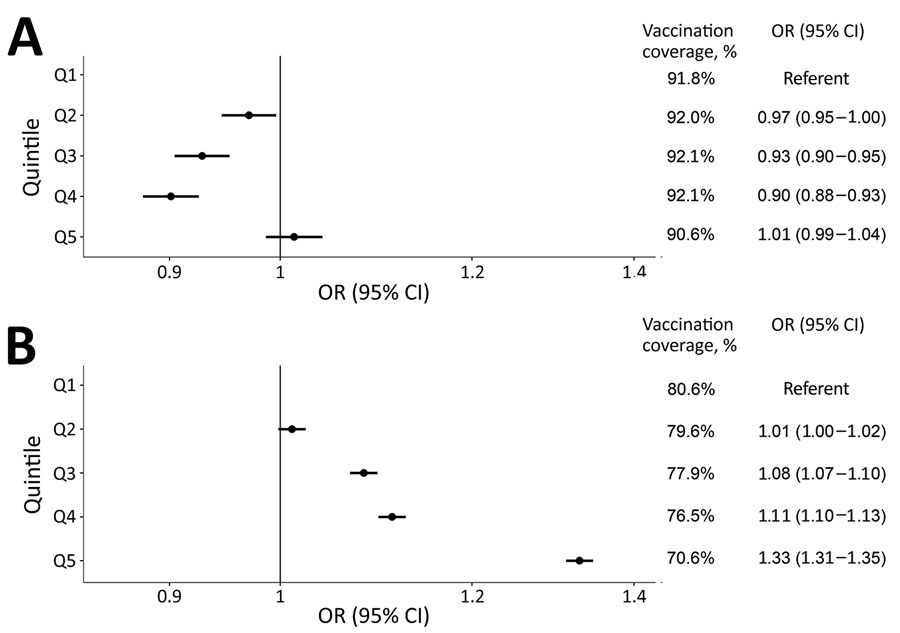Volume 28, Number 11—November 2022
Research
Socioeconomic Inequalities in COVID-19 Vaccination and Infection in Adults, Catalonia, Spain
Figure 3

Figure 3. Odds ratios of nonvaccination 6 months after the start of COVID-19 vaccine rollout by Socioeconomic Deprivation Index quintile, stratified by age group, in study of socioeconomic inequalities in COVID-19 vaccination and infection, Catalonia, Spain, 2020–2021. A) OR for retirement-age persons >65 years of age. B) OR for working-age persons 40–64 years of age. Q1, the referent quintile, represents the least deprived areas; Q5, the most deprived. Persons with complete follow-up (n = 2,258,866) after vaccination were included. Models are adjusted for age, sex, and nationality. Dots indicate OR; bars, 95% CI. OR, odds ratio; Q, quintile.
Page created: October 06, 2022
Page updated: October 21, 2022
Page reviewed: October 21, 2022
The conclusions, findings, and opinions expressed by authors contributing to this journal do not necessarily reflect the official position of the U.S. Department of Health and Human Services, the Public Health Service, the Centers for Disease Control and Prevention, or the authors' affiliated institutions. Use of trade names is for identification only and does not imply endorsement by any of the groups named above.